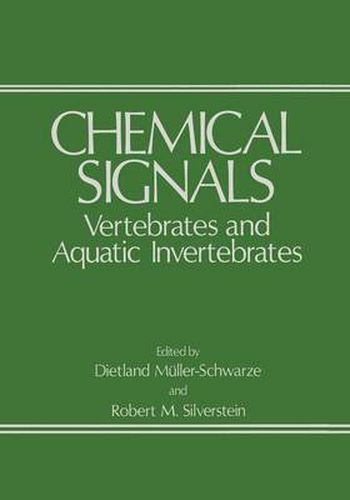Readings Newsletter
Become a Readings Member to make your shopping experience even easier.
Sign in or sign up for free!
You’re not far away from qualifying for FREE standard shipping within Australia
You’ve qualified for FREE standard shipping within Australia
The cart is loading…






This title is printed to order. This book may have been self-published. If so, we cannot guarantee the quality of the content. In the main most books will have gone through the editing process however some may not. We therefore suggest that you be aware of this before ordering this book. If in doubt check either the author or publisher’s details as we are unable to accept any returns unless they are faulty. Please contact us if you have any questions.
Research on chemical communication in animals is in a very active and exciting phase; more species are studied, data are accumulating, concepts are changing, and practical application seems feasible. While most of the work on chemical ecology and chemical sig nals deals with insects, vertebrate communication provides a formidable challenge and progress has been slow. Joint efforts and frequent direct contacts of ecologists, behaviorists, psychologists, physiologists, histologists and chemists are required. Such an interdisciplinary exchange of information took place on the occasion of the Symposium on Chemical Signals in Vertebrates and Aquatic Animals in Syracuse, New York, from May 31 to June 2, 1979. More than one hundred investigators from seven countries participated, and the papers presented comprise this volume. Since the first Symposium on Vertebrate Chemical Signals at Saratoga Springs in 1976, considerable progress has been made with field studies, the physiology of the vomeronasal organ, and its role in reproductive behavior. The behavioral functions and chemi cal nature of priming pheromones are better understood. Efforts to isolate and identify mammalian pheromones are gaining ground, and the bioassays are becoming more sophisticated. In addition to formal presentations, one evening of the Symposi um was devoted to round-table discussions of particular topics. The selected themes indicate the growing points of chemical communi cation research: priming pheromones, vomeronasal organ, bioassay, and practical applications.
$9.00 standard shipping within Australia
FREE standard shipping within Australia for orders over $100.00
Express & International shipping calculated at checkout
This title is printed to order. This book may have been self-published. If so, we cannot guarantee the quality of the content. In the main most books will have gone through the editing process however some may not. We therefore suggest that you be aware of this before ordering this book. If in doubt check either the author or publisher’s details as we are unable to accept any returns unless they are faulty. Please contact us if you have any questions.
Research on chemical communication in animals is in a very active and exciting phase; more species are studied, data are accumulating, concepts are changing, and practical application seems feasible. While most of the work on chemical ecology and chemical sig nals deals with insects, vertebrate communication provides a formidable challenge and progress has been slow. Joint efforts and frequent direct contacts of ecologists, behaviorists, psychologists, physiologists, histologists and chemists are required. Such an interdisciplinary exchange of information took place on the occasion of the Symposium on Chemical Signals in Vertebrates and Aquatic Animals in Syracuse, New York, from May 31 to June 2, 1979. More than one hundred investigators from seven countries participated, and the papers presented comprise this volume. Since the first Symposium on Vertebrate Chemical Signals at Saratoga Springs in 1976, considerable progress has been made with field studies, the physiology of the vomeronasal organ, and its role in reproductive behavior. The behavioral functions and chemi cal nature of priming pheromones are better understood. Efforts to isolate and identify mammalian pheromones are gaining ground, and the bioassays are becoming more sophisticated. In addition to formal presentations, one evening of the Symposi um was devoted to round-table discussions of particular topics. The selected themes indicate the growing points of chemical communi cation research: priming pheromones, vomeronasal organ, bioassay, and practical applications.